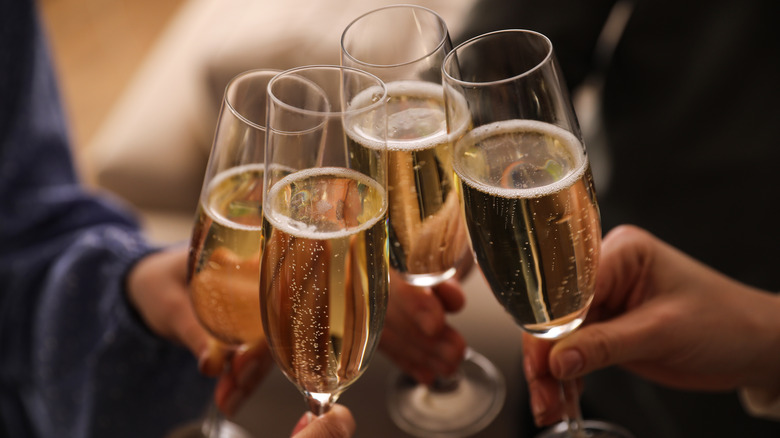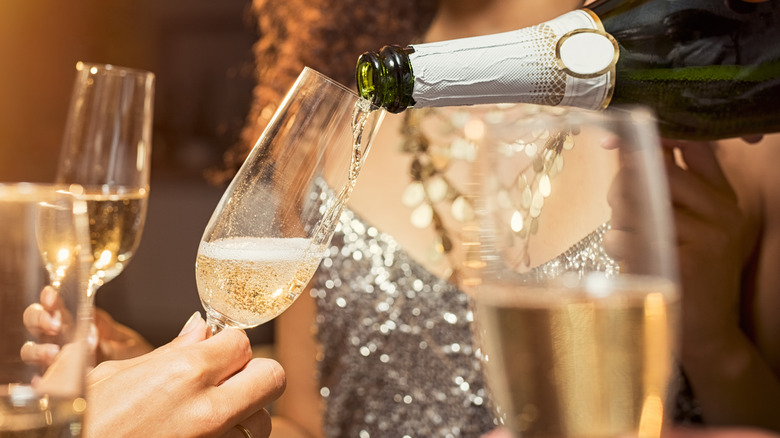How Champagne Was Accidentally Invented
We'd like to propose a toast to an indulgent drink on which we love to imbibe. We're talking about Champagne, people. Over the years, Champagne has become the quintessential drink for celebratory occasions and holidays. The popping of a cork can be heard from miles away as a sign of accomplishments, milestones, and merriment. Champagne is also one of the main ingredients in popular cocktails such as the mimosa, the French 75, the black velvet, and Ernest Hemingway's favorite, Death in the Afternoon (per Esquire). Traditionally served in delicate glass flutes that make a beautiful clinking sound when struck together — or heck, drunk straight from the bottle if you're feeling saucy — Champagne is an easily drinkable delight with a history as rich as it is effervescent.
So, when did the sparkling adult grape juice enter the world? Champagne has been around for a bit longer than a lot of people may realize. The bubbly beverage has roots that can be traced back to the 17th Century, when a French monk discovered that his fermenting wine had formed tiny bubbles.
Champagne was intended to be a plain wine – without bubbles, that is
Champagne was invented in the French region of Champagne (hence the name, of course). As the legend goes, the alleged creator of this celebratory drink was a Benedictine monk by the name of Dom Pierre Pérignon, who was the cellar master at the Abbey of Hautvillers from 1668 until his death in 1715, according to Champagne Gallery. One day, Pérignon accidentally opened a bottle of wine before it was completely finished fermenting. As air entered the bottle and it continued fermenting, he realized he had done something unheard of — or so he thought (per The Good Life France). According to popular myth, Perignon exclaimed something along the lines of, "Come quickly! I am drinking the stars!" to his brothers when he first tasted his fortuitous creation.
The story doesn't end — or begin — there, however. Rumors have been swirling around for many years that the drink we know and love was actually originally concocted in England about 30 years prior to Pérignon's contribution. Obviously, the wine wasn't dubbed Champagne yet due to its location, but historians have learned that an eerily similar product was created by Christopher Merrett, an English scientist who added sugar to wine to create a carbonated quality in 1662, according to the BBC.
All that being said, Dom Pérignon is still credited for devising several regulated techniques that are still used by winemakers around the globe today — most notably, the Méthode Traditionelle (per Champagne-Booking). No matter who the true inventor of one of the greatest libations of all time really may be, Champagne has withstood the test of time and has become emblematic of joyous occasions.

